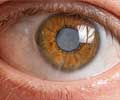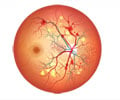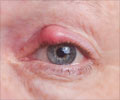The theme of the World Sight Day 2016 on October 13 is Universal Eye Health with a call for action “Stronger Together”.
Highlights
- Sight is one of the senses that is not only important but also enables us to appreciate beauty
- Vision loss is often due to preventable and treatable causes
- The theme of the World Sight Day 2016 is “Universal Eye Health” with the call for action “Stronger Together”.
In addition, patient caregivers play an important role to help people with reduced vision carry on with their normal lives. Patients with vision impairment complete the group. The IAPB hopes to include more individuals in the diabetic community, the irreparably blind, vulnerable groups including those with other disabilities in this group, especially those who do not receive eye examinations on a regular basis. Through this attempt, it hopes to increase the strength of the group and achieve its goal – stronger together.
Blindness is a difficult situation for anybody to be in. It is not easy for a person with blindness to live in a disability-unfriendly world. Here are some facts on blindness:
- There are around 285 million people in the world who are visually impaired, out of which 39 million are blind.
- Around 80% cases of visual impairment can either be prevented or treated. Therefore, around 4 out of every 5 blind people could have enjoyed vision if they had access to eye care at the required time.
- The majority of visually impaired people live in the developing countries.
Some of the ways in which more people can avoid vision impairment and blindness include the following:
- Eye care should be available free of cost especially to the poorest of individuals. It should be easily accessible even in remote areas
- Awareness about the importance of regular eye care should be created so that any eye problem can be detected and treated at the earliest
- Malnutrition especially vitamin A deficiency should be treated at the earliest. Vitamin A deficiency initially causes night blindness that can progress to vision loss if not addressed on time
- Caution should be exercised in conditions that can affect the eyes like watching fireworks or a solar eclipse. Sunglasses should be used to protect against the ultraviolet rays of the sun.
- The eyes should not be rubbed and objects should not be inserted into the eye since there could be damage to the eye or introduction of an infection. It is noteworthy that the number of cases of blindness due to infection has reduced in the past two decades
- The government should conduct surveys regarding the presence of eye disease and the need for eye care facilities, and provide the necessary equipment and eye care specialists to deal with the issue
- Since cataract is a common cause of blindness in the older age group, adequate surgical facilities should be made available to treat it. Cataract can be treated with a simple surgery to remove the foggy lens and replace it with an artificial one. It is also important that the surgical camps should maintain sterility and all precautions so that blindness does not occur because of surgical complications or infection.
- Since diabetes can cause irreversible eye damage, patients with diabetes should get eye tests regularly. High blood pressure should also be kept under control to prevent eye damage
- Glaucoma can often silently cause irreversible eye damage, and may be detected only by regular eye checks
- Smoking should be discouraged. Smoking can affect the eyes by increasing the risk for conditions like cataract and age-related macular degeneration
Reference:
- Internation Agency for the Prevention of Blindness - (http://www.iapb.org/)













